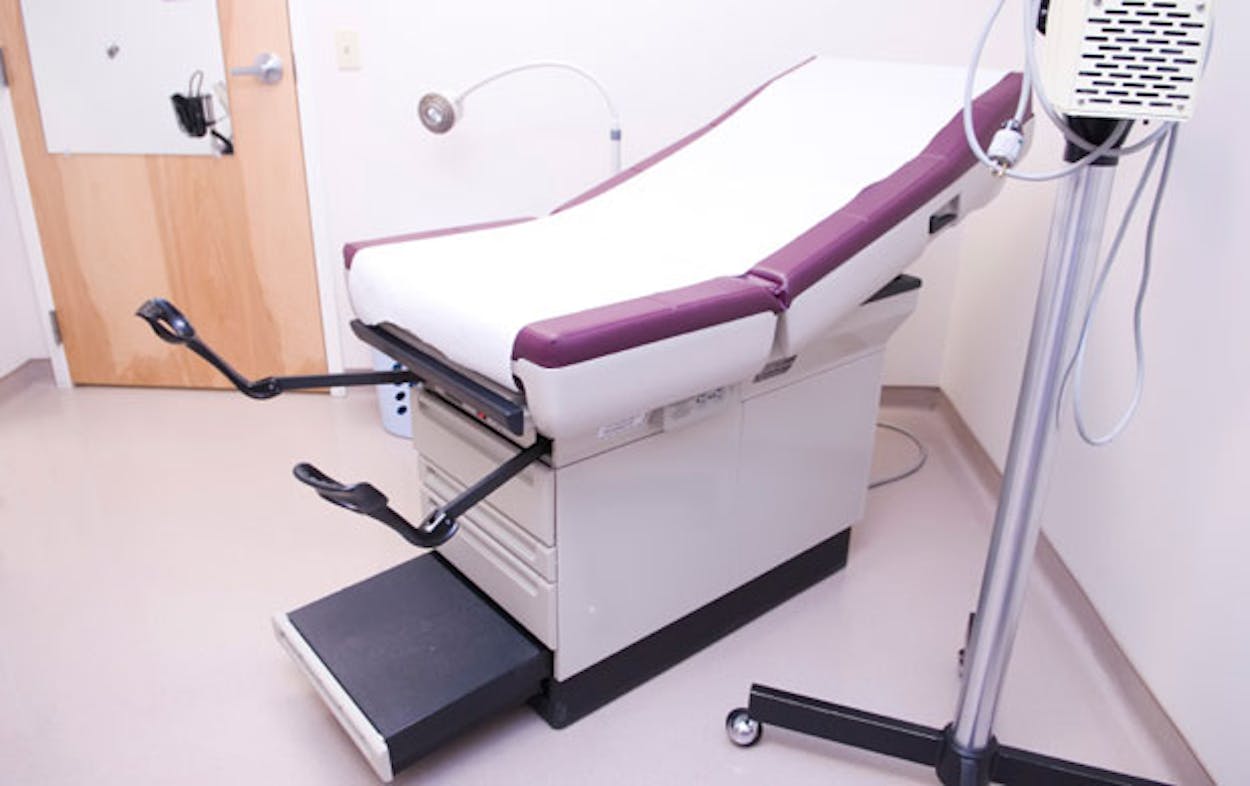 While Texas’s women’s health clinics have been strapped by budget cuts, crisis pregnancy centers have been buoyed by a little extra cash. Carolyn Jones penned a 3,000-word piece in the Texas Observer about the abortion-alternative industry.
While Texas’s women’s health clinics have been strapped by budget cuts, crisis pregnancy centers have been buoyed by a little extra cash. Carolyn Jones penned a 3,000-word piece in the Texas Observer about the abortion-alternative industry.The piece, which is the magazine’s December cover story, traces the history of the Texas Alternatives to Abortion Program, which was created by the Texas Senate Finance Committee and has since received some $26.3 million in state funding. Where does this cash come from? According to Jones, “directly from state budgets for family planning, health screenings and preventative care.” But the majority of these clinics do not offer contraception or other health services, instead promoting abstinence. (“A central tenet of crisis pregnancy center ideology is that chastity is the only acceptable method of contraception for people who aren’t married.”)
Crisis pregnancy centers receive $4.15 million in public money every year, and in fiscal year 2012, provided services to 17,527 clients last year. How much is that per client? Let Jones explain:
The bottom line is that the network’s crisis pregnancy centers spent significantly more public money on each client than family planning clinics while delivering fewer services. Altogether, the Texas Pregnancy Care Network costs the state an average of $237 per client. By contrast, the average client at one of the family-planning clinics in Abilene—since defunded and disregarded by lawmakers—had cost $160.
It’s striking that family-planning clinics could deliver a wider range of services, including pregnancy tests and other well-woman screens (STD and HIV tests, pap smears, breast exams) for an average of $77 less per client than the services that replaced them. That’s a stark discrepancy—even more so considering that the new beneficiaries of the state money don’t provide medical care, but simply “promote childbirth rather than abortion” according to the state’s contract.
Some 60 family planning clinics have shut their doors since the 82nd legislature’s cuts of $73 million went into effect, but crisis pregnancy centers are thriving (and saw their budget increase by $300,000 last session). Many, including Houston obstetrician and Texas Medical Association member Dr. Carla Ortique, are upset by this. “They are taking money away from family planning and giving it to centers that are dealing with the aftermath, with people who are already pregnant,” she said. “It just doesn’t make sense.”
Jones also brings up the The Source for Women, the Houston-based crisis pregnancy center that received its license to operate as a medical clinic last summer, citing it as an example of an “ideology-based” provider that was “hailed by Gov. Perry as the new life-affirming face of the Women’s Health Program.” (The clinic was in the news this week as the site of Rick Perry’s press conference on new “fetal pain” legislation.)
What does the future hold? According to the Observer:
Unless the political mood shifts in the next legislative session, Texas’s bond with the abortion-alternatives industry will continue. They won’t have to tell women that there are other options besides chastity. They will continue to get money, not only from family-planning funds, but also from the sale of Texas license plates exhorting drivers to “Choose Life.” Indeed, without a sharp change in policy from the Legislature, the state will continue to bankroll a program that misleads vulnerable women about the most important choice they might ever make.
The piece is the fifth in the magazine’s “Collateral Damage” series tracking the impact of the legislature’s cuts to family planning services.







